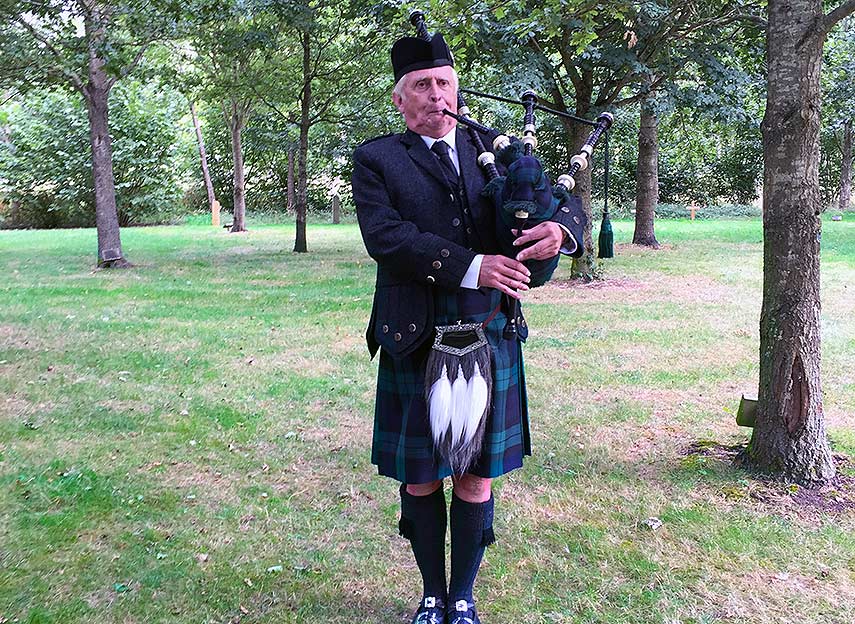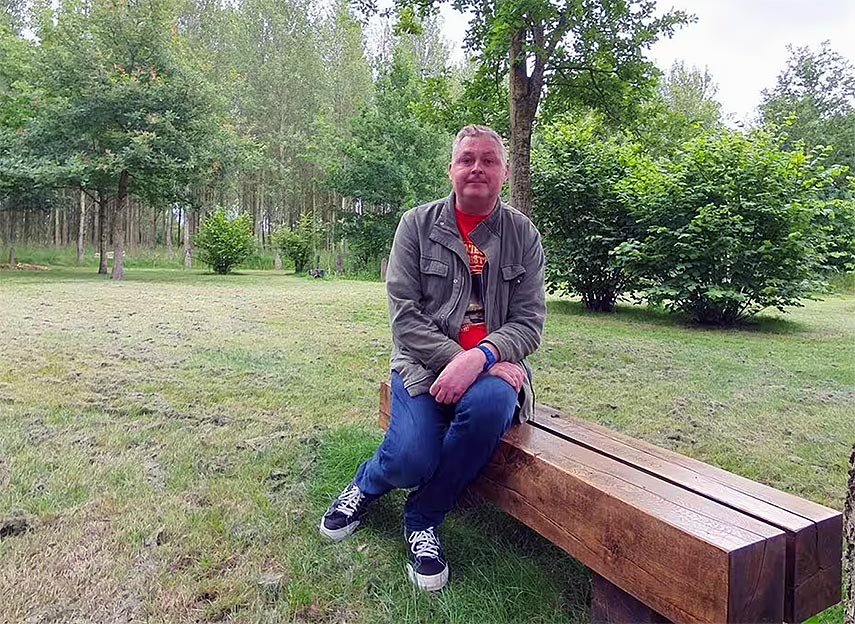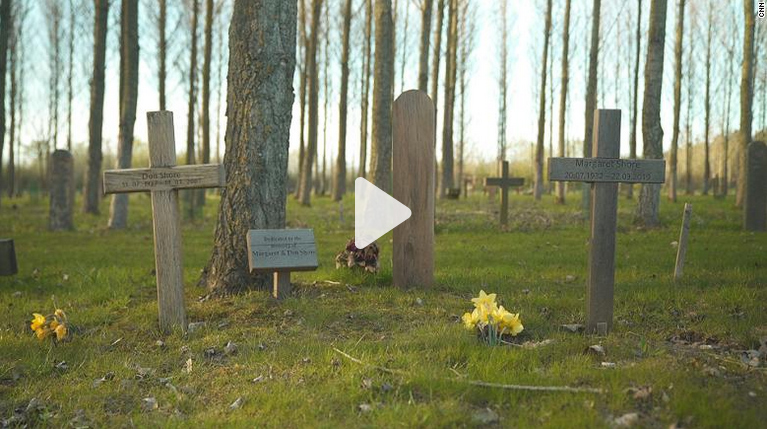Woodland Burials - a celebration of life
Our woodland burials are for everyone, irrespective of faith or belief. The private, remote location lends itself perfectly to personal, tailored tributes giving friends and family the perfect opportunity for that ideal send off. Chat to us about your plans and together we will endeavour to accomodate all your wishes whilst balancing it with the needs of the woodland and wildlife.
This is just one recent example when the sounds of Scotland echoed across the Rills and Glades here at the Woodland Burial grounds in Keysoe.
Donald Reid, Pipe Major for Bedford Pipe Band provided the perfect backdrop to a moving ceremony, playing very personal and meaningful music to accompany the funeral.
Robert Fisk, Express Reporter, Summer 2024
Robert was diagnosed with bowel cancer and as part of his journey through life, he decided to visit the woodland burial ground here in Keysoe back in the summer of 2024.
Following his visit he wrote a very interesting article that touched on his experience and we encourage you to take a quick look. It offers an honest insight into Robert's thoughts and feelings regarding the possibility of dying prematurely and the options when it comes to laying his body to rest.
The link we are about to provide you with is to the Express Article. Please bear in mind that we do not have any control over third party websites and adverts are always likely to pop up here and there.
Link to the Express News Article by Robert Fisk
CNN News Article & Video 2021
This is a great article featuring our Trust on CNN. Coverage like this is so important as it raises awareness about the natural alternatives that exist and humanities role as caretakers of the planet.
A woodland burial is so different to those municipal offerings, reducing pollution, cutting costs and offering a sense of tranquillity that is unique to a woodland setting.
In the UK, burying people to benefit the planet is a fairly new concept and when the Woodland Burial Trust was first established back in 2006, a single burial once a month was very much the norm. Now there are numerous burials every week and numbers are steadily increasing - up 30% on last year alone.
The video opens on the CNN website. As a third party we have no control over their content. Image is courtesy of Facebook 2021
Supporting the Environment
So why is a Woodland Burial better for the environment?
Cremations inflict a high toll on the environment; a cremator needs to operate at 760-1150C for between one and three hours per cremation and uses about 285 kilowatt hours of gas and 15kWh of electricity on average per cremation - roughly the same domestic energy demands as a single person for an entire month. Cremation is also responsible for 16% of the UK’s mercury pollution from dental fillings, other atmospheric dioxins and pollutants linked with cancer and other illnesses.
There is growing pressure on government and local authorities to behave in an environmentally sustainable way, however the way to cut harmful emissions is to burn at higher temperatures! Burning bodies uses precious fuels and creates greenhouse gases, cremation is definitely not the answer for those care about their carbon footprint on the planet or those they leave behind!
Other factors to consider are the headstones, often imported vast distances (many from abroad such as India, China etc). The quarries inflict serious environmental damage on the landscape and transportation burns significant fossil fuel and pollutes our air and oceans.
Coffins are no exception, with those destined for both cremation and ordinary burial usually being made of MDF, or chipboard bonded with formaldehyde resin, with plastic handles and synthetic veneers. These are obviously unsuitable for woodland burial since they are not environmentally friendly and do not naturally decompose in the ground.
Many bodies are often embalmed, a process where all blood and bodily fluids are replaced with a formaldehyde based fluid, this can enter watercourses and prevents natural decomposition. Certainly not an ideal solution in a woodland setting.
How can we make a difference?
Woodland burial is increasingly the responsible choice for people who want to be laid to rest in a way that doesn't harm the environment. Often called green burial, natural burial, or environmentally friendly funerals, this is an obvious choice for those people who want their last footprint to be a green one. Those choosing a woodland burial will be asked to have coffins made of natural materials such as real wood, wicker, or bamboo. Instead of rows of tombstones, woodland burial grounds have wooden memorials and plant trees to create a nature reserve with birds and other forms of wildlife.
Over the period of our lives we use up a vast amount of natural resources. Woodland burial is a way of acknowledging that fact and trying to put something back into the environment that has sustained us throughout our lives, the ultimate recycle.
Wildlife
In this country we have sadly lost much of our natural woodland and from an environmental standpoint it is becoming increasingly important that we not only preserve what is left of our natural world, but where possible create new havens for wildlife.
The Trust strongly supports this approach and together with environmental specialists, Friends of the Woodland and other charities such as the RSPB etc. it is doing everything it can to reverse the decline evidenced across many species of animal and fauna – a truly ‘holistic’ approach from the ground up.
Native trees have been planted in the area and the likes of the Oak are well known to support a myriad of different species that in turn will support an entire food chain.
Owl boxes have been placed at strategic places, Red Kites are often seen in the skies above the woodland together with deer, foxes and many smaller animals which are now calling the woodland, home.
Ancient Woodland
In early times Keysoe had in the order of 350 acres of Oak woodland. Sadly there is little evidence of that now with most of the local countryside being used for arable farming. The Trust is looking to reverse this trend and to ensure that such catastrophic treatment never happens to our woodland again, we protect the land using the strongest laws possible under English Law, namely ‘Consecration’. You can read more about it under our section entitled
‘Consecration’.
Our woodland will survive and whilst we will never see the ancient woodland in its full glory, we can take reassurance from the fact that what we do today, we do for the endless generations that will follow us.




